Table of contents
Coconut blossom sugar (organic?) is palm sugar from the blossoms of coconut palms ( Cocos nucifera ). It is not a raw food product.
Use in the kitchen
Coconut blossom sugar is usually in the form of a brown, grainy powder. In addition to the crystalline form, there is also coconut blossom syrup. It does not taste or smell of coconut, but has a caramel-like taste. Coconut sugar is therefore similar in appearance and taste to brown sugar .
Coconut sugar is a type of palm sugar made from the nectar (sap) of the coconut palm. This is heated until it crystallizes, which is why coconut sugar is never raw. Coconut vinegar is also made from the juice of coconut blossoms by fermenting it. If the juice is allowed to ferment, it becomes coconut wine (palm wine, toddy), which is very popular as an alcoholic drink in tropical countries.
In the kitchen, coconut sugar is particularly popular for making cakes, pies and biscuits made from brown dough and as a substitute for white granulated sugar . Its sweetness is slightly lower than that of household sugar (beet, cane sugar). This and the natural taste of coconut sugar should be taken into account when using it. However, a 1:1 dosage can be maintained for most desserts and sweet dishes. Coconut sugar can be used to sweeten tea, smoothies, fruit salad and muesli. In Asian cuisine, it is also used for spicy sauces, marinades and curries.
Because of the brown color of coconut blossom sugar, you get the feeling that you are consuming a "healthier" sugar. But this is not the case. If you want to sweeten dishes or pastries, the best thing to do is use date syrup (homemade). This tastes sweet, has fewer calories and is high in fiber. Because of its consistency, it is not suitable for sweetening tea or coffee. However, it can be used in shakes or smoothies without any problems.
Vegan recipe for caramelized pumpkin with coconut blossom sugar
Ingredients (for 2 people): 1 Hokkaido pumpkin , salt ,black pepper , 2 tablespoons coconut blossom sugar.
Preparation: Wash the pumpkin, cut in half and scrape out the seeds with a tablespoon. Cut the pumpkin halves into wedges, including the skin. Line a baking tray with baking paper and spread the pumpkin wedges on it. Season with salt and pepper. Cook in the oven at 180 °C for approx. 20 minutes. Around 10 minutes before the end of the cooking time, spread the coconut blossom sugar over the pumpkin wedges and finish cooking. Tastes delicious as a side dish with rice, bulgur or couscous.
Vegan recipes with coconut blossom sugar can be found under the note: " Recipes that have the most of this ingredient ".
| Not only vegans or vegetarians should read this: Vegans often eat unhealthily. Avoidable nutritional mistakes . |
Purchasing - Storage
Coconut blossom sugar can be purchased from major retailers such as Coop , Migros , Spar , Rewe , Edeka , Hofer and Billa , sometimes also in organic quality. Denner , Volg , Spar , Aldi and Lidl occasionally have it as a special offer. Health food stores and organic supermarkets such as Denn's Biomarkt and Alnatura also stock coconut blossom sugar, as do numerous online shops.
As with most products, coconut blossom sugar is available in both cheap and expensive versions. Since its production process is relatively labor-intensive, the prices are usually higher than for other types of sugar. Products that follow organic farming guidelines and pay even the lowest class workers "fairly" ("fair trade") are particularly expensive. But even here, a high price does not necessarily mean high quality. Unfortunately, food fraud is also becoming increasingly common, with coconut sugar being diluted with cheap sugar or starch being added. Due to the way it is produced, coconut sugar is not a raw food product.
The availability of coconut blossom sugar varies depending on the size of the store, catchment area, etc. If you are interested, click on our recorded food prices for the DA-CH countries (above under the ingredient image). There you will find current prices and price developments from various supermarkets.
Storage tips
Coconut blossom sugar, like other types of sugar, should be stored in a closed container in a cool, dry and dark place.
Ingredients - Nutritional values - Calories
100 g of coconut blossom sugar has an energy content of 388 kcal, which corresponds to 19.4% of the daily requirement. It consists of 90% sugar (90 g/100g), with smaller amounts of protein (1.40 g), fat (0.50 g) and fiber (0.80 g). Coconut sugar contains larger amounts of table salt (284 mg/100g). 1
Coconut sugar has more nutrients than granulated sugar and brown sugar. That's why it is promoted as a 'healthier' alternative. With 815 mg per 100 g of coconut sugar, it contains a lot of potassium . Also present in large quantities are iron (3.6 mg/100g) and calcium (189 mg/100g). 1
However, the calorie content of coconut blossom sugar is comparable to that of granulated sugar (387 kcal) and brown sugar (380 kcal). 1 This makes it a poor source of nutrients. Since coconut sugar should only be consumed in small quantities, the actual ingredients consumed are put into perspective.
The complete ingredients of coconut blossom sugar, the coverage of the daily requirement and comparison values with other ingredients can be found in our nutrient tables. In the article Nutrients explained you will get a detailed insight into the topic.
Effects on health
How healthy is coconut blossom sugar? Consumers often try to replace refined sugar with alternative sweeteners such as coconut blossom sugar for health reasons. Coconut sugar is considered 'healthy' because it has a lower glycemic index than conventional refined cane or beet sugar. However, the GI value can vary greatly depending on the manufacturing process, the type of palm, the age and location of the tree. 12 Several GI values have been published: 35-42 4 and 54 3 . Values below 55 are considered low. For "advertising reasons" the GI=35 is often only given. In comparison, refined crystal sugar (sucrose) has a high GI value of 70. 5
When eating foods with a low glycemic index, blood sugar levels do not rise as quickly or as strongly as with foods with a high GI. Coconut sugar is sometimes falsely advertised as being suitable for diabetics. According to the Federal Center for Nutrition (BZFE), it is not a sugar alternative for people with diabetes due to its high sucrose content. 6
Coconut sugar also contains small amounts of minerals and trace elements, which is why it is sometimes advertised as a "superfood". However, the nutrients it contains practically do not contribute to our nutritional supply, as it should only be consumed in small quantities.
Dangers - Intolerances - Side effects
Is coconut blossom sugar unhealthy? The health claims about coconut blossom sugar should be viewed very critically. So far, there are hardly any recognized scientific studies that allow statements to be made about the health effects of coconut blossom sugar. Coconut sugar contains about the same number of calories as table sugar. Isolated sugar is generally considered an unhealthy food that should be consumed in small amounts. Consuming large amounts of coconut sugar is therefore just as unhealthy as consuming white, refined sugar.
Pure coconut sugar is gluten-free. Product analyses show, however, that starch is sometimes added to coconut blossom sugar, which is why it can contain gluten. Coconut sugar is sometimes 'stretched' with other, cheaper types of sugar. 2
Ecological footprint - animal welfare
Coconut blossom sugar is a minimally processed sugar and can be an alternative to refined, white granulated sugar for people who attach particular importance to it. However, the sugar has to be transported several thousand kilometers from the producing countries, which is associated with high CO 2 emissions. Aside from transport, the ecological footprint of coconut blossom sugar depends on how the coconuts are grown, how they are processed and how they are packaged. The Carboncloud website gives the ecological CO 2 footprint of coconut blossom sugar as 0.64 kg CO 2 eq/kg. 14 If you compare this with coconut milk (3.5 kg CO 2 eq/kg) 15 or coconut oil (2.3 kg CO 2 eq/kg) 16 , this amount seems quite low and should therefore be viewed with caution. However, despite extensive research, we were unable to find any other values in this regard.
The production of coconut blossom sugar is very labor-intensive and requires, among other things, the manual harvesting of the blossoms by local farmers. 17 The extent to which fair wages are paid here is questionable for conventional products. Small farmers often manage the coconut plantations for the western market, but the price is dictated by large trading companies. When day laborers manage company-owned plantations, the conditions there are usually inhumane. 7,8 Certified goods have been available for years, but have rarely been in demand. 6
The area required to grow coconut palms is also often associated with land theft, deforestation and the destruction of local biodiversity. In order to meet the high demand, mixed crops are rarely planted, preferring monocultures instead. Coconut oil is also increasingly replacing the controversial palm oil . However, the yield of oil palms, at an average of around 3.8 tonnes of oil per hectare, is far higher than that of coconut oil, at 0.7 tonnes of oil per hectare. 7 If you look at the number of endangered species per million tonnes of oil produced, coconut oil performs even worse than palm oil. 18 A study by the University of Exeter shows that the coconut industry threatens an average of 60 species that are on the IUCN Red List. 9
Worldwide occurrence - cultivation
Coconut blossom sugar is produced from the nectar of the flowers of the coconut palm ( Cocos nucifera ). Coconut palms grow mainly in the equatorial zone, i.e. in tropical areas. People have been using the coconut palm for at least 3000 years. It probably originated in Polynesia (Pacific island region). From the 19th century onwards, coconuts gained economic importance when they were cultivated on plantations by the Dutch in Ceylon. 13
Coconut blossom sugar is mainly produced in South and Southwest Asia. Major producers are Indonesia, the Philippines, Thailand and increasingly India. 2,3
What is the difference between coconut blossom sugar and palm sugar? In addition to coconut palms, sugar palms ( Arenga pinnata), nipa palms (Nypa fruticans) or date palms are also used to produce palm sugar ( Phoenix dactylifera and Phoenix sylvestris ). 3 The composition and taste of the sugar vary depending on the type of plant from which it is extracted. Palm sugar is a general term for all sugars that are made from the nectar of palm trees.
Industrial production
Depending on the production process, the colour of the sugar can vary from light to dark brown, and the taste and smell can vary. 2,11 The production processes vary depending on the country of production and the level of industrialisation of the company.
Coconut blossom sugar is made from the nectar of the flowers of the coconut palm. Nectar can be extracted from coconut palms at a young age and can be tapped for up to 20 years. 2 To do this, 'sap collectors' climb the palms and cut off the unopened blossoms. This causes the nectar (sap) to come out, which is collected in containers attached to the palm tree over a period of 8 to 12 hours. Lime juice is sometimes added to prevent fermentation. The juice is then filtered with a cloth to remove ants and other insects. 11
Traditionally, the juice is boiled at 100-110 °C for 3 hours. Oil or small pieces of coconut meat are sometimes added to prevent it from boiling over. The water contained evaporates and a thick "syrup" remains. This is simmered at 60 °C for another hour, stirring occasionally. As soon as the mass is very viscous, it is placed in cleaned coconut shells or bamboo containers to cool. 11 The production of coconut sugar with the addition of oil (mainly coconut oil, palm oil) takes place mainly in Indonesia, but rarely in the Philippines. 2
Commercially, microwave technology or the evaporation method is used to produce the sugar. The latter boils the juice at 60 °C in a vacuum of 250 mbar. This allows production at lower temperatures and in a shorter time. 11
You can buy coconut sugar "as a block" or you can grind the sugar until only fine sugar crystals remain. Coconut sugar in powder form clumps when it is moist. That's why starch is sometimes added to make it easier to spread. 2
Further information
The coconut palm ( Cocos nucifera ), also called coconut palm, is the only species of this genus and belongs to the palm family (Arecaceae). The coconut, the fruit of the coconut palm, is not a true nut, but a single-seeded drupe. It consists of three carpels that grow together, which is also why it is often slightly triangular in shape. The three eyes that you see on one side are the three germ holes, whereby only one germ begins to grow at a time.
Alternative names
The English name for coconut blossom sugar is coconut sugar, coconut blossom sugar or coconut jaggery.
In English, the fruit, tree or seed are called coconut or cocoanut. When referring to the palm tree, we speak of the coconut tree.

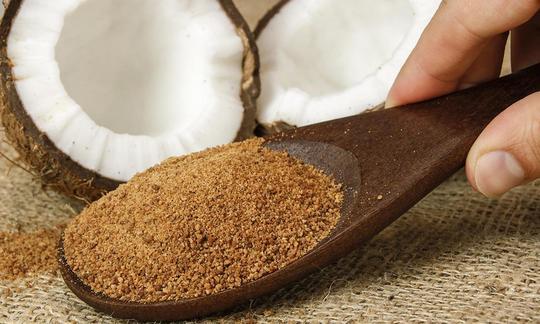

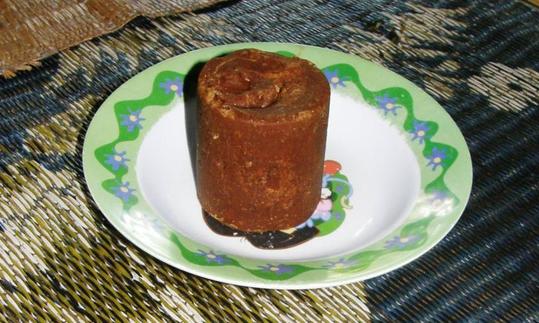

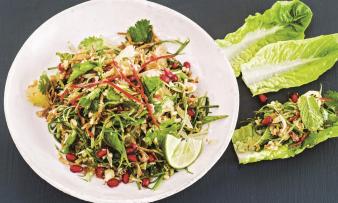
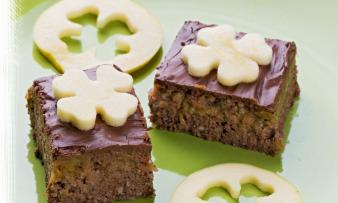
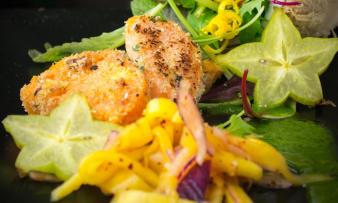





Comments